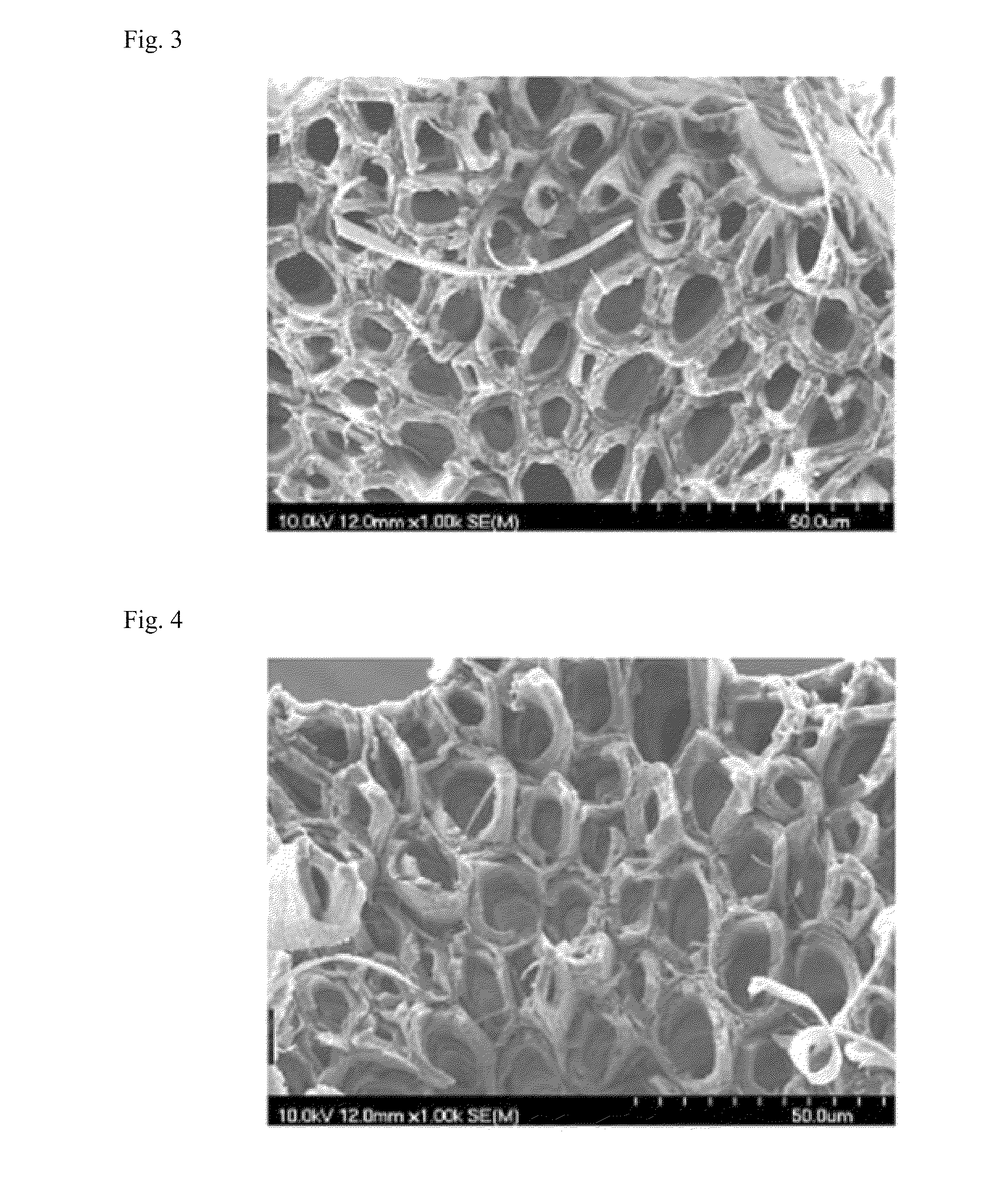Catalysts having metal nano-particle catalyst supported on surface-treated natural cellulose fibers and preparation method thereof
- Summary
- Abstract
- Description
- Claims
- Application Information
AI Technical Summary
Benefits of technology
Problems solved by technology
Method used
Image
Examples
example 1
Preparation of Cellulose Catalyst Support Using Henequen Fibers and Preparation of Nickel (Ni) Nanocatalyst Using the Same as Catalyst Support
[0048](1) Electron Beam Treatment for Removing Impurities from Henequen Fiber
[0049]Henequen fibers were subjected to electron beam treatment to remove impurities oxidized at low temperature therefrom. For electron beam treatment, untreated henequen fibers were placed in a polyethylene bag and an electron beam of 10 to 500 kGy was irradiated thereto from an electron accelerator (ELV-4 type, EB Tech Co., Ltd.). During electron beam irradiation, the inlet of the plastic bag was slightly opened to remove water and ozone produced during the electron beam irradiation to minimize the effects thereof on the henequen fibers. The maximum acceleration energy of the electron gun was 1.0 MeV. The electron beam irradiation was carried out in air while moving the sample at a constant speed of 10 m / min on a conveyor belt with the current set at 4.95 mA.
[0050]...
example 2
Preparation of Cellulose Catalyst Support Using Henequen Fibers and Preparation of Ni Nanocatalyst Using the Same as Catalyst Support
[0056]A Ni nanocatalyst was prepared in the same manner as Example 1, except that Ni nanoparticles were supported on the cellulose catalyst support by impregnation.
[0057]The pretreated cellulose catalyst support was deposited in an aqueous solution (1M) of a metal precursor Ni(CO)4. After ultrasonication for 1 hour, the catalyst support was allowed to stand in solution for 12 hours. The resulting cellulose catalyst support in slurry state was filtered from the solution, dried in an oven at 100 to 120° C. for over 12 hours, followed by burning in a furnace at 400 to 600° C. for 3 hours under nitrogen atmosphere. As a result, a catalyst having Ni nanoparticles supported on the cellulose catalyst support was obtained.
PUM
| Property | Measurement | Unit |
|---|---|---|
| Temperature | aaaaa | aaaaa |
| Temperature | aaaaa | aaaaa |
| Temperature | aaaaa | aaaaa |
Abstract
Description
Claims
Application Information
 Login to View More
Login to View More - R&D
- Intellectual Property
- Life Sciences
- Materials
- Tech Scout
- Unparalleled Data Quality
- Higher Quality Content
- 60% Fewer Hallucinations
Browse by: Latest US Patents, China's latest patents, Technical Efficacy Thesaurus, Application Domain, Technology Topic, Popular Technical Reports.
© 2025 PatSnap. All rights reserved.Legal|Privacy policy|Modern Slavery Act Transparency Statement|Sitemap|About US| Contact US: help@patsnap.com



